Mazda CX-30 vs Volvo V60 – Which model is better for everyday use?
Both models have their strengths – but which one suits you more?
Compare performance, efficiency, price and space directly: Mazda CX-30 or Volvo V60?
Costs and Efficiency:
Price and efficiency are often the first things buyers look at. Here it becomes clear which model has the long-term edge – whether at the pump, the plug, or in purchase price.
Mazda CX-30 has a clearly advantage in terms of price – it starts at 25200 £, while the Volvo V60 costs 41600 £. That’s a price difference of around 16414 £.
Fuel consumption also shows a difference: Volvo V60 manages with 2.40 L and is therefore significantly more efficient than the Mazda CX-30 with 5.70 L. The difference is about 3.30 L per 100 km.
Engine and Performance:
Power, torque and acceleration say a lot about how a car feels on the road. This is where you see which model delivers more driving dynamics.
When it comes to engine power, the Volvo V60 has a decisively edge – offering 455 HP compared to 186 HP. That’s roughly 269 HP more horsepower.
In acceleration from 0 to 100 km/h, the Volvo V60 is convincingly quicker – completing the sprint in 4.60 s, while the Mazda CX-30 takes 8.30 s. That’s about 3.70 s faster.
In terms of top speed, the Mazda CX-30 performs slightly better – reaching 204 km/h, while the Volvo V60 tops out at 180 km/h. The difference is around 24 km/h.
There’s also a difference in torque: Volvo V60 pulls decisively stronger with 709 Nm compared to 240 Nm. That’s about 469 Nm difference.
Space and Everyday Use:
Beyond pure performance, interior space and usability matter most in daily life. This is where you see which car is more practical and versatile.
Both vehicles offer seating for 5 people.
In curb weight, Mazda CX-30 is slightly lighter – 1455 kg compared to 1734 kg. The difference is around 279 kg.
In terms of boot space, the Volvo V60 offers a bit more room – 519 L compared to 430 L. That’s a difference of about 89 L.
In maximum load capacity, the Volvo V60 performs hardly perceptible better – up to 1431 L, which is about 25 L more than the Mazda CX-30.
When it comes to payload, Volvo V60 slight takes the win – 506 kg compared to 496 kg. That’s a difference of about 10 kg.
Who comes out on top?
Overall, the Volvo V60 shows itself to be outperforms in nearly all aspects and secures the title of DriveDuel Champion.
It convinces with the more balanced overall package and proves to be the more versatile choice for everyday use.

Volvo V60
Mazda CX-30
The Mazda CX-30 effortlessly combines sleek design with a sense of adventure, making it an appealing choice for urban explorers and countryside enthusiasts alike. Inside, the cabin is thoughtfully designed, offering both comfort and cutting-edge technology to enhance the driving experience. Its performance on the road is agile, providing a smooth and engaging journey for drivers and passengers.
details @ de.mazda-press.com
@ de.mazda-press.com
 @ de.mazda-press.com
@ de.mazda-press.com
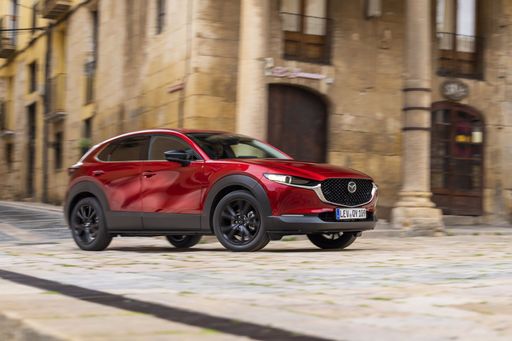 @ de.mazda-press.com
@ de.mazda-press.com
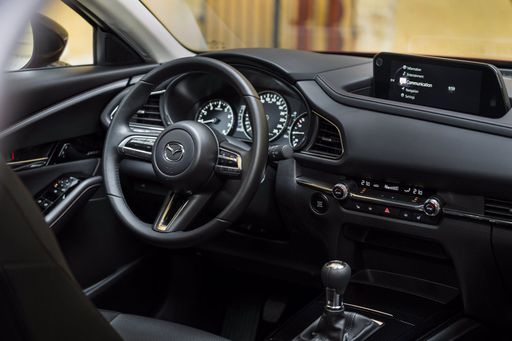 @ de.mazda-press.com
@ de.mazda-press.com
Volvo V60
The Volvo V60 exudes a sense of refined elegance with its sleek design and smooth contours, making it a standout in the estate car category. Inside, it offers a harmonious blend of luxury and functionality with premium materials and state-of-the-art technology, ensuring a comfortable driving experience. Its performance on the road is impressive, combining efficient handling with a powerful yet quiet ride, making it a favourite for those who appreciate both style and substance.
details @ media.volvocars.com
@ media.volvocars.com
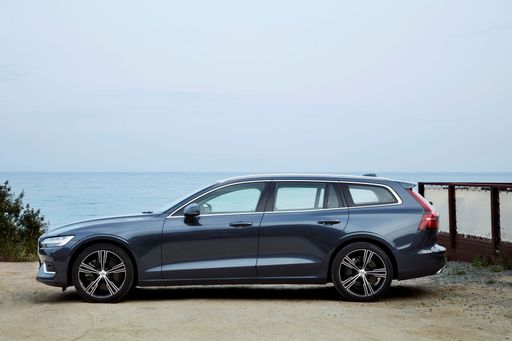 @ media.volvocars.com
@ media.volvocars.com
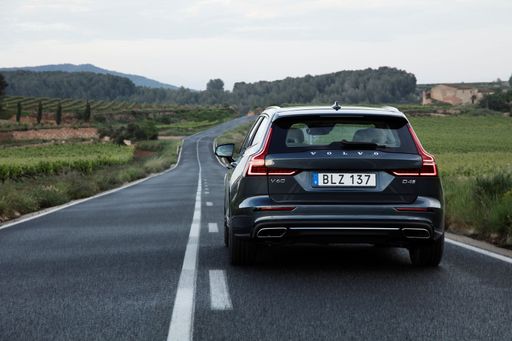 @ media.volvocars.com
@ media.volvocars.com
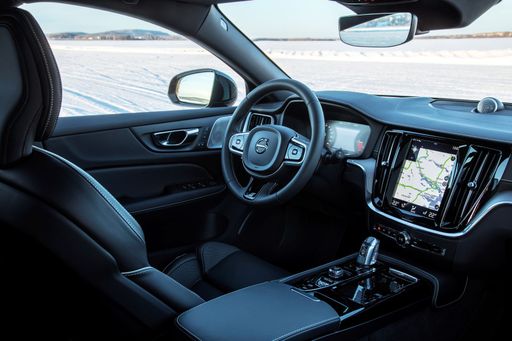 @ media.volvocars.com
@ media.volvocars.com
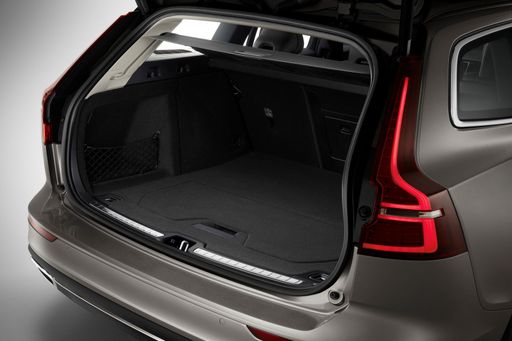 @ media.volvocars.com
@ media.volvocars.com

|

|
|
|
|
Costs and Consumption |
|
|---|---|
|
Price
25200 - 36800 £
|
Price
41600 - 64200 £
|
|
Consumption L/100km
5.7 - 6.6 L
|
Consumption L/100km
2.4 - 6.2 L
|
|
Consumption kWh/100km
-
|
Consumption kWh/100km
-
|
|
Electric Range
-
|
Electric Range
92 km
|
|
Battery Capacity
-
|
Battery Capacity
14.70 kWh
|
|
co2
129 - 148 g/km
|
co2
54 - 140 g/km
|
|
Fuel tank capacity
48 - 51 L
|
Fuel tank capacity
60 L
|
Dimensions and Body |
|
|---|---|
|
Body Type
SUV
|
Body Type
Estate
|
|
Seats
5
|
Seats
5
|
|
Doors
5
|
Doors
5
|
|
Curb weight
1455 - 1587 kg
|
Curb weight
1734 - 2064 kg
|
|
Trunk capacity
422 - 430 L
|
Trunk capacity
519 L
|
|
Length
4395 mm
|
Length
4778 mm
|
|
Width
1795 mm
|
Width
1850 mm
|
|
Height
1540 mm
|
Height
1432 mm
|
|
Max trunk capacity
1398 - 1406 L
|
Max trunk capacity
1431 L
|
|
Payload
458 - 496 kg
|
Payload
466 - 506 kg
|
Engine and Performance |
|
|---|---|
|
Engine Type
Petrol MHEV
|
Engine Type
Petrol MHEV, Plugin Hybrid
|
|
Transmission
Manuel, Automatic
|
Transmission
Automatic
|
|
Transmission Detail
Manual Gearbox, Automatic Gearbox
|
Transmission Detail
Dual-Clutch Automatic, Automatic Gearbox
|
|
Drive Type
Front-Wheel Drive, All-Wheel Drive
|
Drive Type
Front-Wheel Drive, All-Wheel Drive
|
|
Power HP
140 - 186 HP
|
Power HP
197 - 455 HP
|
|
Acceleration 0-100km/h
8.3 - 10.3 s
|
Acceleration 0-100km/h
4.6 - 7.6 s
|
|
Max Speed
191 - 204 km/h
|
Max Speed
180 km/h
|
|
Torque
238 - 240 Nm
|
Torque
300 - 709 Nm
|
|
Number of Cylinders
4
|
Number of Cylinders
4
|
|
Power kW
103 - 137 kW
|
Power kW
145 - 335 kW
|
|
Engine capacity
1998 - 2488 cm3
|
Engine capacity
1969 cm3
|
General |
|
|---|---|
|
Model Year
2025
|
Model Year
2024 - 2025
|
|
CO2 Efficiency Class
D, E
|
CO2 Efficiency Class
E, B
|
|
Brand
Mazda
|
Brand
Volvo
|
What drive types are available for the Mazda CX-30?
The Mazda CX-30 is offered with Front-Wheel Drive or All-Wheel Drive.
The prices and data displayed are estimates based on German list prices and may vary by country. This information is not legally binding.
